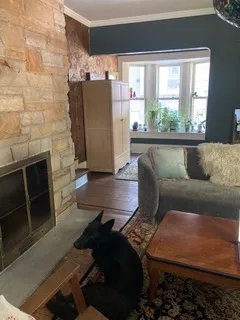One evening when I was 14, five of my friends and I decided to play “ding dong ditch it.” Not an uncommon pastime for bored teens in the 1970s, we rang the doorbells at random houses and then ran away, our bodies giddily awash with adrenaline.
We were lucky we didn’t die that night.
At one house, we rang the bell on two occasions separated by about 15 minutes. The second time, the owner came out and chased us with a rifle. The house had recently been burglarized and the owner suspected the culprits of that crime had returned to strike again.
The frontal lobes of the human brain are responsible for executive functioning, which includes impulse control, judgment and the ability to plan out steps for a desired goal or outcome.
Unfortunately, however, frontal lobes do not fully develop until the early to mid-20s (later for males than females), which is why parents often ask young adult children who’ve done something reckless, “What were you thinking?”
“What were they thinking?” is a question I’ve heard and certainly thought when considering Ethan Liming and three of his friends driving around West Akron the evening of June 2, shooting at random strangers (as far as has been reported) in multiple places with water pellet guns.
Their fun ended when these four Firestone High School students targeted three young men, ages 19, 20 and 21, playing basketball at the courts next to the I Promise School. Assuming they were being shot at with real bullets, the young men ran. When they realized that was not the case, they turned back and a fight ensued.
In a news conference, Akron police stated that Liming didn’t deserve to die. Those words land like concrete. The job of the police is to investigate. It’s up to the courts to consider the evidence and make judgments.
Furthermore, the three young men playing basketball didn’t deserve to be terrorized by four young men who pulled up in a car at or after sunset (8:53 that night), jumped out and ran toward them while blasting two water pellet guns.
And yet most of the reporting on this tragedy has painted Liming, who was white, as a good young man while leaning heavily on the engrained racist trope of the Black male criminal in the portrayal of the three basketball players, all of whom are African American.
If you’ve been following this case, ask yourself what you know about the three who were playing basketball. Are they related? Where’d they go to school? Are any in school now? Who do they live with? Where do they live?
At most we know one of them has been employed at a warehouse for over two years. I doubt he is any longer after our county prosecutors and a judge decided that the three young men who were assaulted while playing ball are such a threat to society that they are being held in jail on $1 million bonds, or what lawyers sometimes call “publicity bonds.”
According to Emily Bazelon in her book “Charged,” only two countries have cash bail bond systems: America and the Philippines (hardly a paragon of justice). The rest of the world simply expects people who are charged to show up at court because if they don’t a warrant for their arrest will be issued.
I live two blocks from the I Promise School and presumably some, if not all, of the three young men playing basketball that night live in my neighborhood. I believe they should be released until trial.
Let’s talk about my neighborhood.
In 20 years of living in our neighborhood, my family has witnessed several gun-related incidents. The most recent was on a sunny afternoon last summer.
My eldest son, Claude, was driving in the first block of Oakdale Avenue, just one block west of the I Promise School. In the span of no more than 15 seconds, the car ahead of him stopped, a man wearing a backpack walked from the curb to that car, briefly spoke to the occupants, then turned away. A passenger in the car held a gun out of his window and shot the backpack man in the lower back. The car peeled away.
My son called 911 and then, along with other witnesses, aided the shooting victim.
In my neighborhood, the basketball players had every reason to believe they were being shot at with real guns containing real bullets.
If it walks like a duck and talks like a duck, it’s a duck. When it sounds and looks like bigotry — be it racial, gender, ability or more — it is. Best way to check? Play screenwriter and change up the scene.
What if my three (tall, fit, white, blond) sons in their 20s had been playing basketball at the I Promise courts that night when the Firestone four pulled up in their car and began shooting? And what if, in the ensuing fight, one of the two young Black men in the car with Liming had died? Do you think my sons would be sitting in the county jail under $1 million bonds? I don’t.
And what if my (tall, fit, white, blond) sons legally carried handguns? With our state’s whack-a-doodle gun laws, my sons could have killed each of the Firestone four and used the “Stand Your Ground” law as their defense. No doubt they’d be cleared of all charges, if any were even filed.
Or let’s say the four Firestone males instead drove to a basketball court in upscale Bath and jumped out, pellet guns a-blazing, at three white males. Again, if in the ensuing fight Liming had died, who would be in jail today? Anybody?
Or, if you would rather not consider hypotheticals, recall what actually happened to a Black 12-year-old playing with a toy gun in a Northeast Ohio city park with his sister in broad daylight in 2014. A 911 dispatcher received a call of a “guy” with a gun, and two seconds after police pulled up in their patrol car, one of the officers shot Tamir Rice dead. Two seconds.
Yes, Ethan Liming’s family and friends are deeply grieving his loss. But so are the families of three youths who were minding their business, playing basketball on a warm summer’s eve when they were assaulted by a carload of young men with guns that first appeared deadly.
What would you have done if you were the three playing basketball? What did the Firestone four believe were the possible outcomes when running at three strangers while shooting them with pellets? I doubt they thought it through. And now seven families and six young men must live with the tragic consequences.
This was first published in the Akron Beacon Journal on July 10, 2022.


